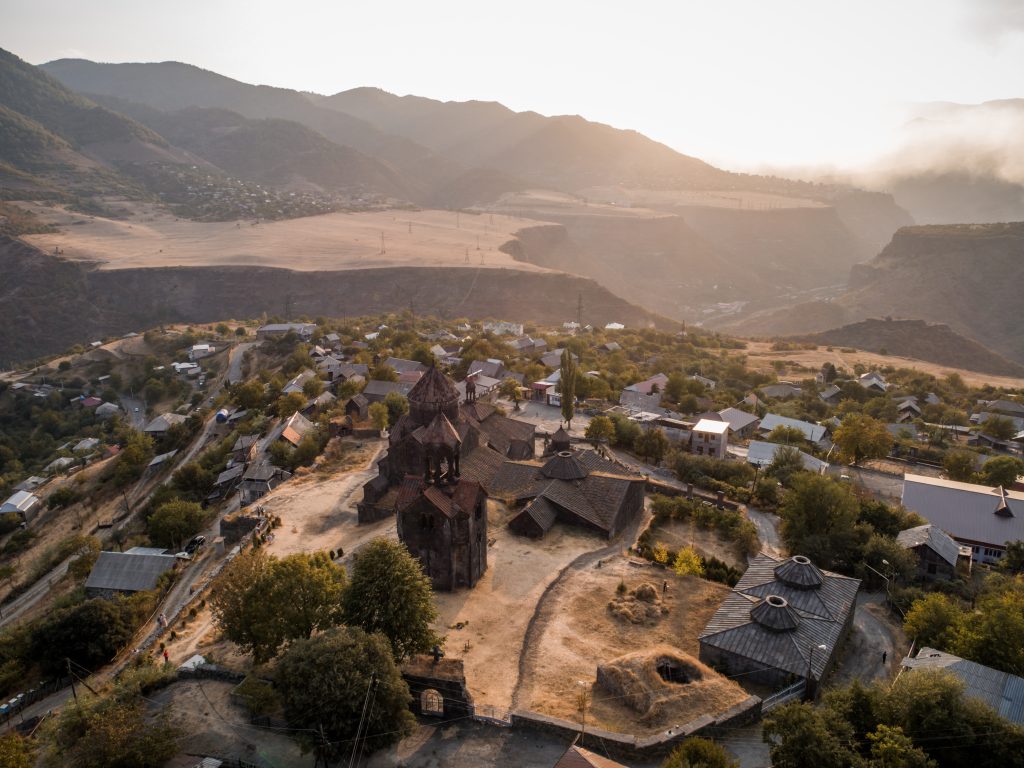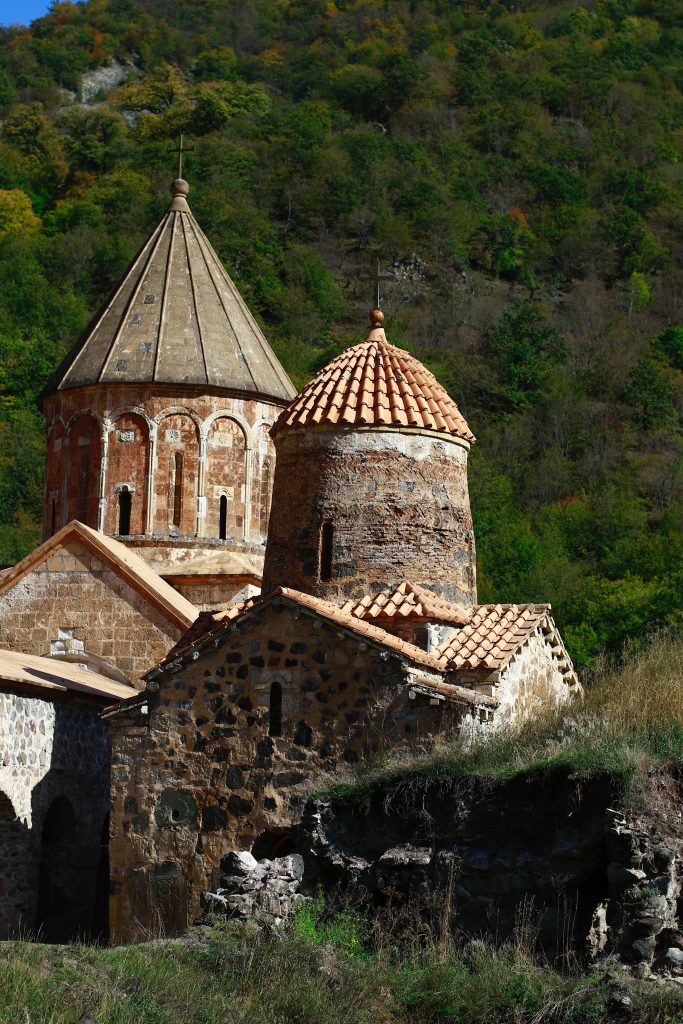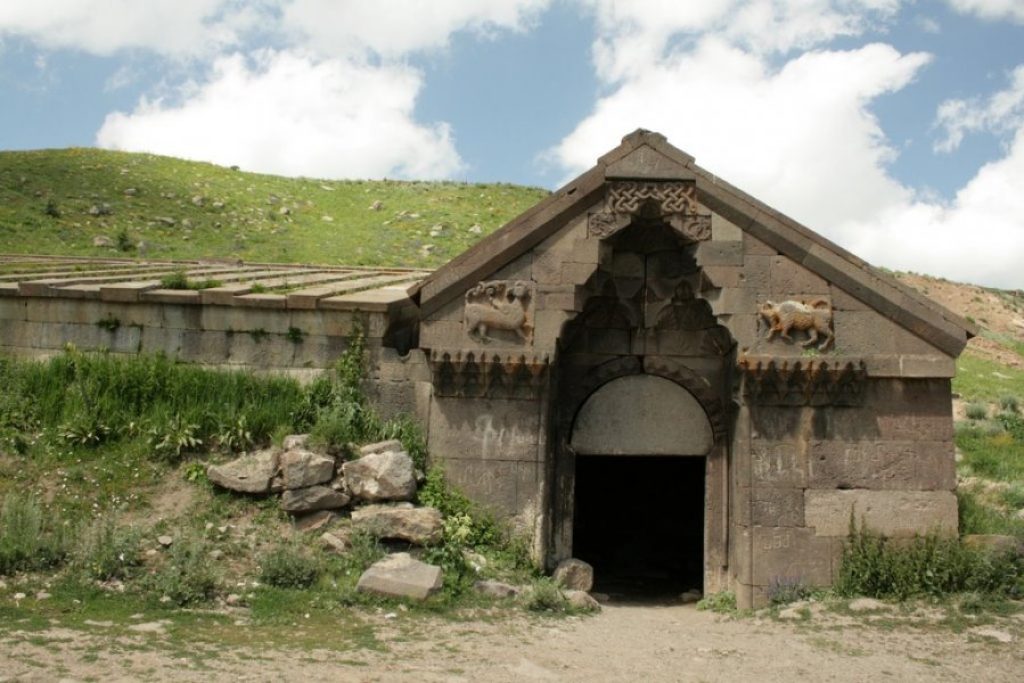
Photo by Ivars Utinans on Unsplash
Learn the secrets of the Silk Road’s impact on this fascinating land as you experience beautiful panoramas, friendly natives, and a blend of the past and present. Historic routes wind through breathtaking scenery to create a cultural tapestry along the fabled Silk Road. Take a trip that combines the enduring appeal of hiking with the fascinating history of this Eurasian intersection.
You will feel the excitement of exploration as you travel across Armenia’s rough terrain, and you will also be retracing the routes of the traders, explorers, and pilgrims who once traveled the legendary Silk Road.
Let us explore the essential hiking routes in Armenia and look for historical echoes of the Silk Road, making memories that combine nature, history, and adventure in a fantastic journey. We will also consider helpful tips to make your tour more fulfilling and enjoyable.
Brief History of the Armenia and the Silk Road
Armenia has played a crucial role in the complex history of the Silk Road. For many years, this region has played a crucial role in allowing the interchange of products, ideas, and civilizations between Asia and Europe. The great civilizations of China and the Mediterranean were linked by the Silk Road, a network of prehistoric trade routes covering more than 6,000 kilometers.

Photo by Nare Gevorgyan on Unsplash
Armenia’s vital participation in this commerce web was secured by its advantageous position. Armenia developed as a vital stopping location, supporting thriving commercial hubs and bustling markets, as caravans laden with silk, spices, and precious metals traveled these routes.
Armenia influenced the Silk Road in many ways than just trade. Thanks to its diverse population and rich cultural heritage, the nation was a melting pot of languages, ideologies, and cultures. Travelers left cultural traces behind as they traversed its regions, enhancing Armenia’s unique tapestry.
The Silk Road did, however, have particular difficulties. Armenia’s fate was formed by the ebb and flow of various empires, including the Persian, Roman, Byzantine, and Ottoman. It experienced both prosperous and turbulent times, permanently altering the course of its history.
Hikers now use the same roads merchants and explorers formerly took as they traverse Armenia’s footpaths. The Silk Road’s echoes continue reverberating, constantly reminding Armenia’s important role in this momentous period of human history.
It is also important to note that the Silk Way is about 4000 miles, and there are few cities along the way; this means that it takes a lot of time to go from one end to the other end of the Silk way. The love of nature and the curiosity about history brings so many people to the silk way every year.
Description of the Sight
Discoverers will find the historic Garni Temple and its stunning environs nestled amid the rough embrace of the Armenian mountains. The Garni Temple is a gem that carries tourists through time, a monument to the continuing spirit of Armenia’s historical and architectural legacy.
Visitors are welcomed by a facade covered with elaborate carvings and ornate features that whisper tales of gods, goddesses, and legendary creatures as they approach the temple. A journey in and of itself, the enormous staircase leading to the temple provides panoramic views of the surroundings, including the symmetrical columns and massive arches that adorn the temple’s facade.

When one enters, a sensation of infinity embraces them. The central room, which previously served as a temple dedicated to the sun god Mihr, emanates a reverent and ethereal ambiance. The whispers of old rituals and ceremonies still seem to reverberate off the temple’s stone walls despite the passing of centuries.
Beyond the temple itself, the location has other attractions. Explore the ruins of an ancient royal palace and try to picture the life of the people who lived here in the past. The Azat River will then stream through the gorge below as you marvel at the harmony of nature and architecture.
More than just a sight, Garni Temple is a multifaceted experience that awakens the senses and sparks the imagination. It serves as a window into Armenia’s history, a prompt to consider the passage of time and a reminder of the unbreakable bonds that bind civilizations together over the ages. Visitors can’t help but feel a deep connection to the fabric of history, culture, and natural beauty as the sun reflects its golden hues across the ancient stones.
Ways to Get There
Airplane
Depending on your location, it might be appropriate to take a flight, especially if you are visiting Armenia from another country. Your plane will touch down at Yerevan’s Zvartnots International Airport (EVN). When you arrive, you can then use other forms of transportation to get to the Silk Way.
Private Vehicle
Using a private vehicle is the most adaptable mode of transportation. Driving in Armenia lets you explore the country’s roadways at your speed. Follow the M4 highway east from Yerevan, the country’s capital, and arrive at the temple’s entrance in about an hour. The excursion promises beautiful views and the chance to visit neighboring sights.
Public Transportation
From Yerevan’s Garegin Nzhdeh Square, take a bus or marshrutka (minibus) to experience local life. These affordable choices let you see a bit of daily life as you travel through towns and natural settings. Arrive at Garni Village, then stroll at your own pace to the temple.
Group Tours
Joining a guided tour will bring you to the depths of Garni’s history through the perspectives of skilled guides. Since so many tours include transportation, leaving Yerevan is hassle-free. As you journey with like-minded hikers, engage with the temple’s history.
Details on hiking Tour du Mont Blanc
When to Go: Weather and Season
The best time to hike Armenia and travel the Silk Road is probably in the spring, which makes the months of April through June the best time to embark on this thrilling journey.
As nature awakens from winter slumber, Armenia becomes a hiker’s paradise in the spring. The nice moderate weather makes for a great outdoor exploration environment, with temperatures ranging from cozy to warm. The vistas explode with color, with wildflowers covering the pathways and rich vegetation adorning the valleys and mountain slopes.
This time of year, hiking has a lot of benefits. You can quickly go around the area because the pathways are clear and accessible. Traveling through the lovely landscape, you’ll encounter historical landmarks like the Garni Temple and old Silk.
Hikers also have the chance to observe the local way of life up close during the spring. Traveling through rural areas, you’ll see locals tending to their orchards and farms, offering a fascinating cultural immersion.
Although spring is typically the finest time of year for hiking, it is still advisable to be prepared for changing weather, especially at higher elevations. Packaging the necessary gear and clothing layers can prepare you for unforeseen changes.
When you start your hiking trip in Armenia’s springtime splendor, you’ll experience the area’s unmatched beauty and learn about the Silk Road’s historical mysteries, all while taking advantage of the pleasant weather and breathtaking views that make for an unforgettable adventure.
Accommodation
Various lodging choices are available in Armenia and along the Silk Road to accommodate different tastes and price ranges. Armenia offers a variety of options for both urban adventurers and outdoor lovers. The capital, Yerevan, is home to many hotels, from opulent buildings with cutting-edge amenities to lovely boutique hotels with regional charm.
Hostels and guesthouses offer inexpensive options and promote interactions with other tourists. Cozy lodges and bed-and-breakfasts provide relaxing retreats in cities like Gyumri, Vanadzor, and Dilijan. Spa resorts in Jermuk offer relaxation after a day of exploring for a hint of indulgence.
Accommodations when traveling the Silk Road vary by region. Charming inns and guesthouses offer a warm welcome in Georgia and Iran. Modern hotels and boutique accommodations are available in Turkey in hotspots like Istanbul and ancient wonders like Cappadocia.
Food and Water
1. Local Cuisine: Every town along the Silk Road has a rich gastronomic history. Enjoy grilled pork, lavash (flatbread), and dolma (stuffed grape leaves) in Armenia. Enjoy Georgian khachapuri (cheese-filled bread), Iranian kebabs, and Chinese dumplings as you travel east. It is a good thing you will be here for a few weeks. It will make it possible to try all sorts of local delicacies
2. Street foods Enjoy the vibrant street food scenes and regional markets found along the route. These provide an opportunity to meet people and get a real taste of regional specialties. Choose stalls with a high turnover rate and use caution with hygiene.
3. Restaurants & Cafés: Along the Silk Road, cities and towns provide a range of dining establishments, from posh diners to inexpensive joints. Ask other travelers or locals for advice and research popular local attractions.
4. Bottled water: Even though tap water is typically safe in various nations, it is best to stick with it to prevent potential health risks. Please bring a reusable bottle and fill it with bottled water from reliable suppliers.
5. Food Safety: Be mindful of food cleanliness, particularly at markets and roadside stands. Ensure that freshly prepared food is served hot, that fruits and vegetables are thoroughly cleaned, and that dairy items have been pasteurized.
Tips to know when hiking the Silk way
- The vistas you travel through are magnificent. Follow the “Leave No Trace” guidelines to leave the smallest possible environmental footprint and protect the environment for future generations.
- Capture Memories, Journal, sketch, or take photos to record your adventure. These souvenirs will serve as enduring keepsakes of your life-changing journey.
- Seek seclusion and Connection. Strike a balance between times of seclusion and chances to interact with locals or other hikers. These exchanges enhance your comprehension of the areas you visit, which can present new perspectives.
- Pace yourself and take breaks as necessary to recharge, hydrate, and rest. Excessive exertion can result in accidents and weariness.
- Group Safety, walking in a group or with a friend whenever you can. Let someone know your plans and anticipated return time if you’re hiking alone.
Potential Dangers
- Variable Weather: Because of the Silk Road’s varied topography and heights, the weather might change suddenly. Hikers may not be prepared for sudden temperature drops, rain, snow, or high winds. Pack the suitable layers of clothes, waterproof gear, and be ready for various weather conditions to reduce this danger. Before leaving, check the weather forecast and make any necessary adjustments to your plans.
- Altitude and Acclimatization: The Silk Road passes through many high-altitude areas, making altitude sickness a severe risk to trekkers. Rapid ascents without adequate acclimatization can cause weariness, nausea, headaches, and vertigo. Allow time for progressive acclimatization, keep hydrated, abstain from alcohol and strenuous activity, and descend if symptoms develop to prevent altitude-related problems.
- Isolated Areas: Some sections of the Silk Road run through isolated, poorly populated regions where it may be difficult to get medical care or communicate. Hikers must be self-sufficient and carry the necessities, such as a first aid kit, maps, and radios for emergencies. Before starting your hike, let someone know your plans and anticipated return time.
- Wildlife Encounter: Depending on the area, hikers may encounter wildlife, such as porcupines, Poisonous snakes, or insects. Your safety depends on your ability to comprehend the local wildlife’s behavior. Carry the proper deterrents, be prepared to respond if you encounter animals, and secure food storage will help keep wildlife away from your campground.
Conclusion
Hikers go through time as they walk over the historic Silk Road routes, connecting with the footsteps of past traders, nomads, and explorers as they cross different landscapes. The tour offers insights into the many civilizations that coexisted along these trade routes, from the vibrant bazaars of distant places to Armenia’s breathtaking scenery.
A celebration of human resiliency and connectedness, hiking Armenia and the Silk Road goes beyond the material past. It shows how the past has influenced the present and serves as a reminder of the ongoing power of trade and cultural interaction. The hikes allow fellowship with other travelers and solitary reflection amid breathtaking natural scenery, strengthening one’s appreciation of togetherness and isolation.
Walking across Armenia and along the Silk Road is like listening to a symphony of footsteps that have echoed throughout time. It inspires us to embrace an exploratory mindset, enjoy the flavors of various cuisines, be amazed by architectural marvels, and reflect on the excellent connectivity of people. Ultimately, it’s a call to start a journey of self-discovery, where each step is a step toward realizing the eternal tale of our shared human ancestry.

